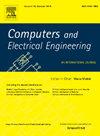XAI-INVENT: An explainable artificial intelligence based framework for rapid discovery of novel antibiotics
IF 4
3区 计算机科学
Q1 COMPUTER SCIENCE, HARDWARE & ARCHITECTURE
引用次数: 0
Abstract
The failure of the most potent medicines to eradicate superbugs underscores the urgent need to develop new antimicrobial drugs. Antibacterial peptides (ABPs) are oligopeptides present in all multicellular organisms and serve as the first line of defense against pathogens. ABPs provide several benefits over conventional antibiotics; therefore, they have recently gained significant attention as an alternative. Finding ABPs in the laboratory is expensive and time-consuming. Therefore, wet-lab researchers use in-silico tools to discover ABPs from natural sources. The existing tools available for this purpose suffer from the limitation of being black boxes. In the present work, we developed XAI-INVENT, an explainable artificial intelligence-based framework for the rapid discovery of novel antibiotics. For building XAI-INVENT, first, the probability scores of deep learning models are fused, and then the fused scores are utilized with local interpretable model-agnostic explanations (LIME) for determining the critical amino acids. The value of performance metrics, namely Accuracy, Sensitivity, Precision, F1-Score, Specificity, and Matthews correlation coefficient obtained by the proposed framework for test data is 96 %, 96 %, 97 %, 96 %, 97 %, and 92 %, respectively. To help wet-lab researchers, XAI-INVENT is deployed as a web server at https://xai-invent.anvil.app/.
求助全文
约1分钟内获得全文
求助全文
来源期刊

Computers & Electrical Engineering
工程技术-工程:电子与电气
CiteScore
9.20
自引率
7.00%
发文量
661
审稿时长
47 days
期刊介绍:
The impact of computers has nowhere been more revolutionary than in electrical engineering. The design, analysis, and operation of electrical and electronic systems are now dominated by computers, a transformation that has been motivated by the natural ease of interface between computers and electrical systems, and the promise of spectacular improvements in speed and efficiency.
Published since 1973, Computers & Electrical Engineering provides rapid publication of topical research into the integration of computer technology and computational techniques with electrical and electronic systems. The journal publishes papers featuring novel implementations of computers and computational techniques in areas like signal and image processing, high-performance computing, parallel processing, and communications. Special attention will be paid to papers describing innovative architectures, algorithms, and software tools.
 求助内容:
求助内容: 应助结果提醒方式:
应助结果提醒方式:


